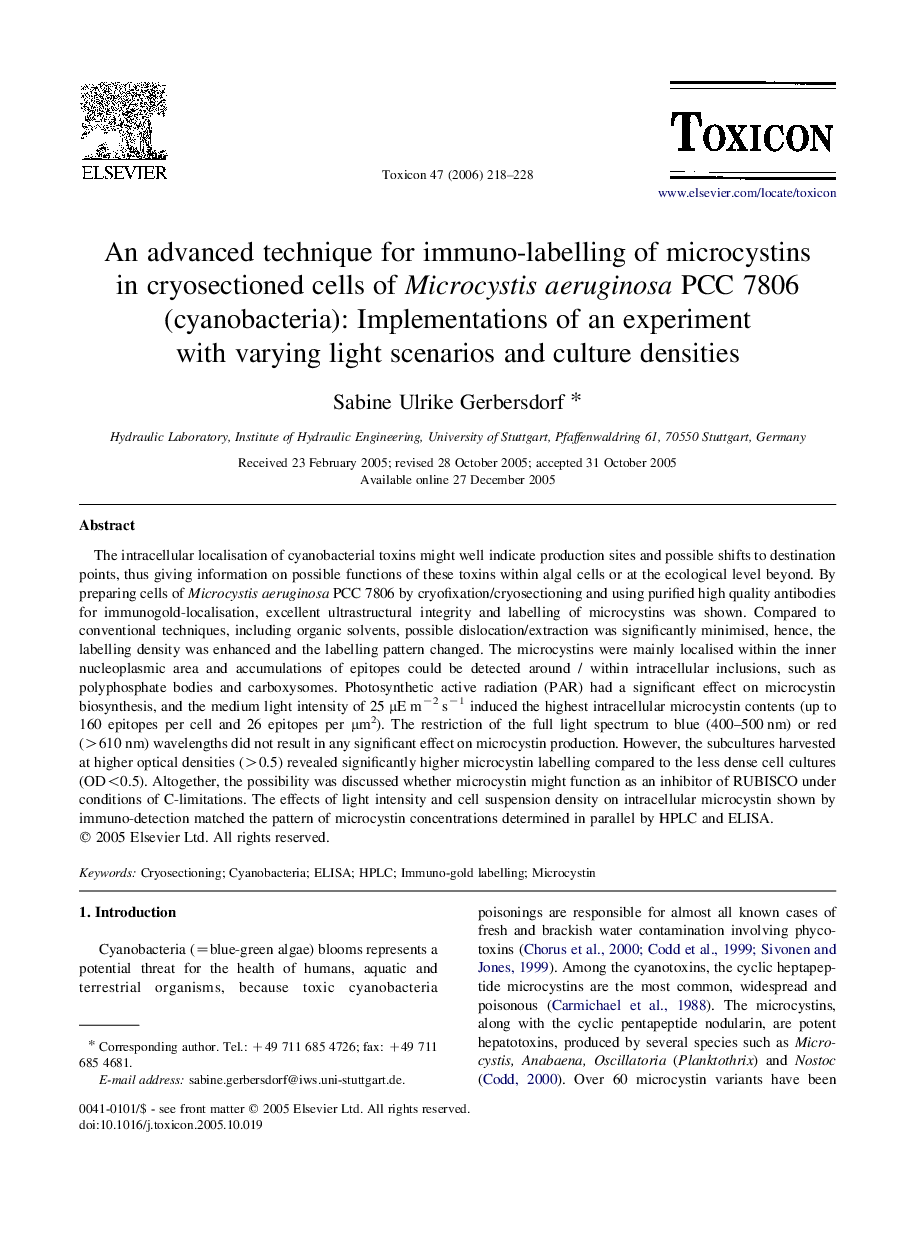| کد مقاله | کد نشریه | سال انتشار | مقاله انگلیسی | نسخه تمام متن |
|---|---|---|---|---|
| 2065968 | 1076952 | 2006 | 11 صفحه PDF | دانلود رایگان |

The intracellular localisation of cyanobacterial toxins might well indicate production sites and possible shifts to destination points, thus giving information on possible functions of these toxins within algal cells or at the ecological level beyond. By preparing cells of Microcystis aeruginosa PCC 7806 by cryofixation/cryosectioning and using purified high quality antibodies for immunogold-localisation, excellent ultrastructural integrity and labelling of microcystins was shown. Compared to conventional techniques, including organic solvents, possible dislocation/extraction was significantly minimised, hence, the labelling density was enhanced and the labelling pattern changed. The microcystins were mainly localised within the inner nucleoplasmic area and accumulations of epitopes could be detected around / within intracellular inclusions, such as polyphosphate bodies and carboxysomes. Photosynthetic active radiation (PAR) had a significant effect on microcystin biosynthesis, and the medium light intensity of 25 μE m−2 s−1 induced the highest intracellular microcystin contents (up to 160 epitopes per cell and 26 epitopes per μm2). The restriction of the full light spectrum to blue (400–500 nm) or red (>610 nm) wavelengths did not result in any significant effect on microcystin production. However, the subcultures harvested at higher optical densities (>0.5) revealed significantly higher microcystin labelling compared to the less dense cell cultures (OD<0.5). Altogether, the possibility was discussed whether microcystin might function as an inhibitor of RUBISCO under conditions of C-limitations. The effects of light intensity and cell suspension density on intracellular microcystin shown by immuno-detection matched the pattern of microcystin concentrations determined in parallel by HPLC and ELISA.
Journal: Toxicon - Volume 47, Issue 2, February 2006, Pages 218–228